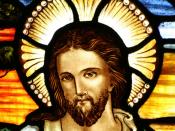The Byzantium Civilization started cause of overcrowding in the eight century B.C. that led Greek city-states to send out colonies throughout the Mediterranean basin. In the year of 667 B.C.; Byzas, from the Greek city of Megra, founded Byzantium Civilization at the mouth of the Black Sea. Alexander the Great dominated Byzantium as he built an empire around it stretching from Greece to India. Byzantium was the Christianized eastern part of the Roman Empire. Constantine the Great was a vital figure in the early stages of this civilization. He established toleration for Christianity throughout the Roman Empire and legally transferred his capital from Rome to Constantinople, which is the site of the Greek City of Byzantium. Roman law and political institutions ruled the people there and they spoke Latin and Greek languages. Merchants at this city were able to grow rich cause of its strategic location between the Mediterranean and Black Seas.
Constantine liked to import Greek-Roman art from throughout the empire.
Byzantium art focused on human figures. The most prominent figures that were created were Christ, the Virgin Mary, the saints, and the apostles. The emperor was believed to be divinely sanctioned by god. Human figures were portrayed in sculptures in two different styles. One style expressed power, authority, and grandeur. The other style expresses adoration, sympathy, prayer, and distress.
The Attarouthi Treasures consist of fifteen objects: ten chalices, three censers, a wine strainer, and a dove. The artifacts were found buried in the vicinity of the ancient town Attarouthi. This town was a stopping point on the trade routes. The chalices were used to hold wine during the Liturgy. Upright frontal figures decorated most of the chalices with Christ appearing as a beardless young man. The dove represents the Holy Christ that descended over Christ when Saint...


